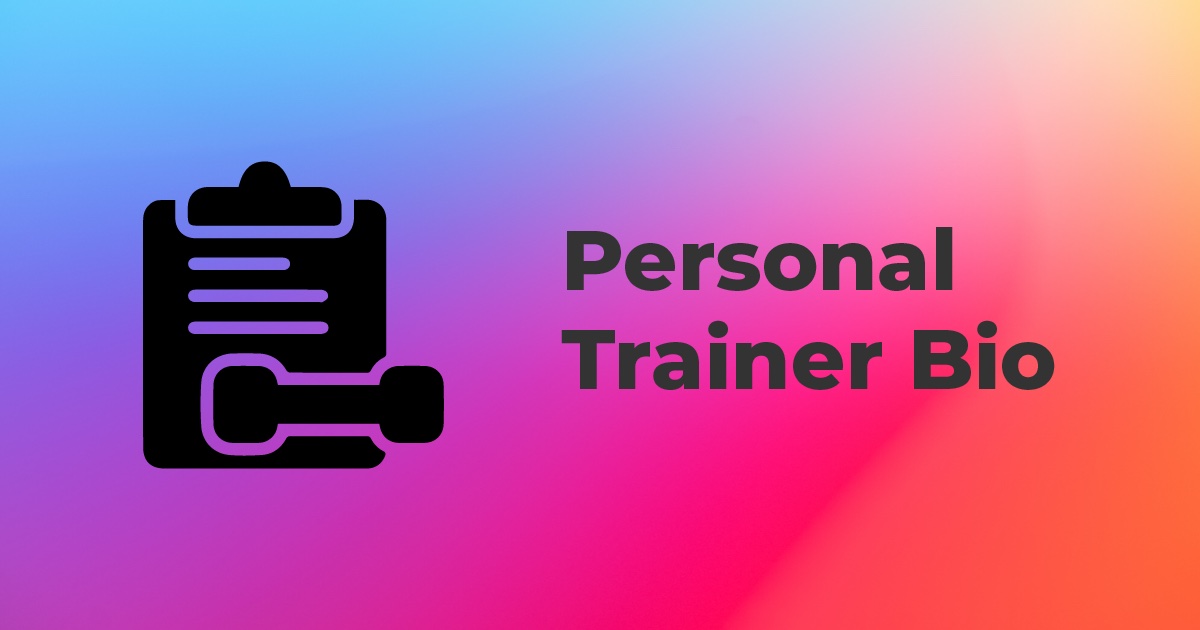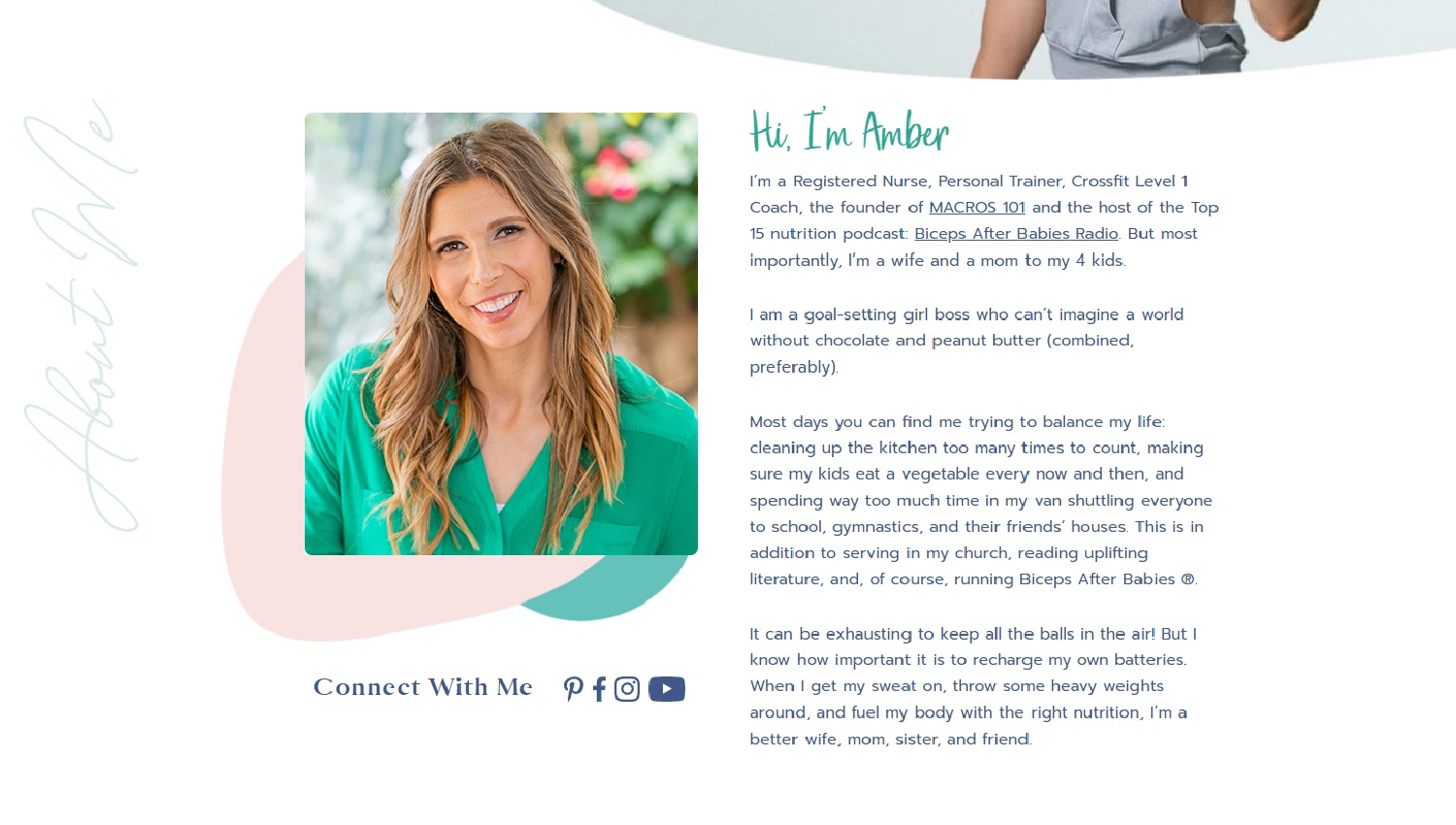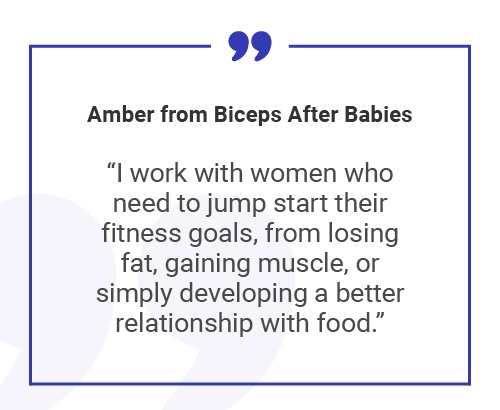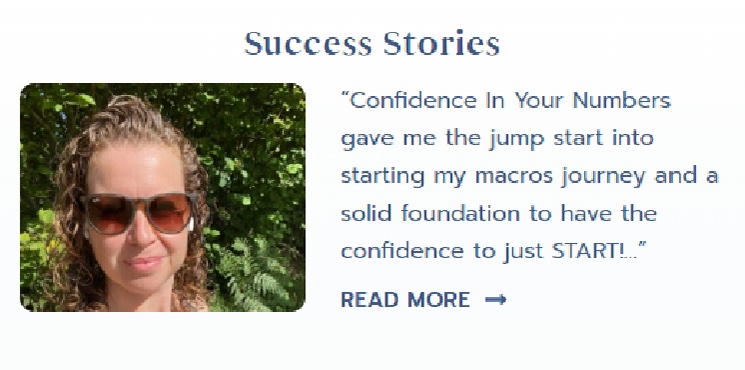
A personal trainer bio or “About Me” page is a nonnegotiable part of a great personal training website and can play a big role in the success of your business.
Your bio is a way of building interest and trust. In fact, it’s often the first section a prospective client will look at. When done well, your bio can persuade people to work with you – or at the very least to sign up for your emails or follow you on social media.
Unfortunately, many personal trainers waste this opportunity by writing something generic or impersonal – or worse, braggy and self-congratulatory.
So how do you make sure you grab readers’ attention with your_ _bio? You start by putting yourself in their shoes.
Any prospective client reading your bio is trying to find out if you are the right fit for them.
They are not reading your bio to:
- Be amused or entertained
- Be in awe of how awesome and badass you are
- Kill time
A serious prospective client is reading to figure out whether:
- You can solve their problem(s)
- You are fun and easy to work with
- You are trustworthy and credible
- You are better than the other options out there
Yes, your bio is a place where you get to talk about yourself. And yes, it’s important to mention your accomplishments – and maybe you are a badass at what you do!
But your prospective client wants to find out what you can do for them. It doesn’t matter how qualified or certified you are, or how long you’ve been in the fitness industry if your potential client can’t tell whether you are a caring, relatable individual who can:
- Listen to their problems
- Identify their needs
- Provide the answers to all their burning questions.
And if you _can _do all those things? Then you’ve already gone a long way in building trust and converting your prospects into actual customers.
In this post we’re going to take a look at the 5 specific things your potential clients are trying to figure out when they read your bio, and how to address and include all of them in your bio so you can convert readers into clients.
Table of Contents:
- Chapter 1: Who are you?
- Chapter 2: Who do you help?
- Chapter 3: What is your story? (AKA: What makes you special?)
- Chapter 4: Why should they trust YOU?
- Chapter 5: What’s the next step?
Who are you?
Don’t be deceived by how obvious this first one sounds.
“Who are you” includes the technical, simple stuff: your name/title, and any certifications and qualifications you have. It also includes your educational background and relevant experience.
An uninspiring bio would end right there.
But not yours.
You need to make sure you include the most important element yet: Your identity.

Let’s talk just a little bit about what that means.
People want to connect with people who are similar to them. Parents like to talk about their kids with fellow parents. Hikers and sports enthusiasts love sharing adventure stories with each other. Dog owners love finding other dog owners they can empathize with.
You get the idea. Identities are important. Most of us have multiple identities that we define ourselves by.
Use one (or more) of your identities in your bio. Share your interests, hobbies and insights from your personal life and you will naturally attract the interest (and trust) of people who are similar. It should go without saying that whatever you share should be genuine and authentic.
Wondering which of your personal identities you should include in your bio? Think about the ones you and your ideal client have in common. If you and your ideal clients are both parents, then share a bit about your family. If both of you love cooking then share insights about your hobby.
Not sure who your ideal client or niche is yet? Check out this article.
Want to make your bio even more relatable? When sharing your personal interests and experiences with your readers, be sure to include awesome, relevant photographs.
For example, if you and your target client base are parents then be sure to share 1-2 photographs of you with your kids. There’s nothing like a good visual to build connection and a sense of understanding between you and prospective clients.
Whatever your shared identity, make sure that in your photographs you look approachable – like a “real” person. Now is not the time to use Instagram-perfect poses and filters.
Next to the way you “talk” in writing, a photo is the closest thing to a prospective client actually meeting you. You want to be relatable and human.
Who do you help?
This is directly tied to your targeted niche for your client base.
When writing your bio, you should be able to confidently finish the following sentence: “I help _.”

The rule is to be specific. Here are some examples:
- I help Fremont residents lose weight without them having to go on restrictive diets
- I help seniors who are mostly cooped up at home get back into a more active lifestyle
- I help busy moms find more energy and feel beautiful in their own bodies
Give your potential clients a description that evokes imagery and emotion. Give them a visual that makes it clear what you’re in the business of doing and what they can look forward to achieving.
A specific description of the type of clients you help makes it clear to readers whether they are (or aren’t) within your target niche.
What is your story? (AKA: What makes you special?)
This step is probably the most important one. It’s also the one that most personal trainers totally skip since it takes a little extra effort.
This step is where you differentiate yourself from others in your field, and explain to your prospects what makes you unique and better.
The ideal way to do this is by presenting your own story and telling people why you do what you do.
Here’s an example:
*“Everywhere I looked on Instagram, none of the yoga teachers looked like me. They were all young, thin, and bending themselves into pretzel-like shapes!**
I realized that maybe there were people out there who looked more like me, but who thought they couldn’t benefit from yoga because they were too old or overweight. That’s why I started Yoga Over 40.”
Or:
“I tried every diet out there: paleo, vegan, gluten-free, keto, you name it. Then I realized that strict dieting wasn’t for me or my body, and figured out how to achieve weight loss while eating whatever I wanted (within reason!).
“It’s both my belief and experience that you don’t have to follow some crazy strict diet to lose weight and live your best life.”
Here are some prompts to help you find your story/angle:
- How did your personal training style evolve/develop? Was there something you changed along the way that helped you and others succeed more?
- What motivated you, and what continues to motivate you, to be a personal trainer?
- What are some challenges you’ve overcome? What are some failures you’ve recovered from?
- Have you discovered anything related to health and fitness that has changed your and your clients’ lives for the better?
- What is your focus? What makes you different from your competitors?
Ultimately your answer should be able to fit into this template, or one similar to it:
“I love helping/doing < Your target identity/niche >. But I noticed there was a < specific problem/lack in the industry >. So I started my own business to make a difference.”
There’s no need, at any point, to put down other trainers or other personal training methods. Instead, approach from the angle of solving a problem to better meet the needs of a certain type of person.
Why should they trust YOU?
Simply telling the reader that you are different, special and better isn’t enough. Having great examples, great photos and a great shared identity isn’t even enough either.

Potential clients want to see real life success stories; they want social proof.
Having someone else praise you, rather than praising yourself, is far more convincing to prospective clients and a crucial part of gaining their trust.
This is why you want to share at least 2 or 3 success stories (even if they are just short blurbs, or quotes) from people you have helped in the past.
Make sure that the success stories/examples you use are all people in your targeted niche – the same niche, ideally, as the prospective client reading your bio.
Use photos, if possible, of your former clients whose success stories you’re sharing. This will make them (and you) more real and relatable to the reader, in turn building further trust and interest.
And if you are just starting out as a personal trainer? Get creative! Use success stories from family members, friends or acquaintances you’ve helped – just make sure (again) that they are in your target niche.
Make sure your success stories include results, showing that you are capable of delivering. (E.g., “thanks to [Your name]’s amazing 20-day program, I was able to do my first hand-stand ever!”)
What’s the next step?
At this point several of your readers, aka potential clients, should be ready to take the next step. They’ve read about who you are, who you help and what your story is. They’ve seen the social proof, and now they feel like they know you. To some extent, they even trust you.
Now it’s time to give them a call to action. Tell them what to do next.
The key is to make this step as easy and frictionless for them as possible.
There are multiple ways to do that, but here are two of the easiest:
Book a consultation call.
A big mistake many people make is to simply use a contact form.
This is a passive approach that slows down the whole process of getting in touch with your future clients. It requires extra steps (emailing, calling) that burdens them and makes them think twice about whether they really want to reach out to you.
You want to strike when the iron is hot – when they are excited to hear from you so they can get started ASAP. Do this by having a single step that requires a single click of the mouse to connect with you.
Calendly is a good example of a scheduling app that will let you do this. All the prospective client has to do is scan your available time slots and pick one that works for them for a call. Done.
Use a low barrier offer.
One way to entice prospective clients is by offering them a taste of your training at a free or discounted rate.
If you like to run online fitness challenges, this is the option to go with. A short, free fitness challenge – e.g., 10 day weight loss blast, or 21-day summer shred – is a fun and high value offering that motivated prospects will be eager to join.
To make the process as easy as possible for your future client, go with an online personal training app that will automate the entire challenge for you. The simpler the process is, the more likely your clients and prospects are to stick with you and see results. This will make them excited to commit to more of your services.
TrainerFu is a good example – their software will let you automate everything from registration and payment to delivering workout videos.
Ready to write your personal trainer bio?
With a lot of competition out there, the key to having your fitness bio stand out is having a clear shared identity with your prospective clients.
It’s not just about the skills and the qualifications you have (though those matter, too), but about human aspects such as hobbies and experiences that create connection and trust.
Remember to use photos (and videos, even) of yourself to help your prospective clients interface with you even better. You should be clearly able to answer the question “I help ___,” using a niche that is specific and attention-grabbing.
And while all of the above are great, they’re still not enough – you need social proof in the form of awesome success stories from clients in your relevant niche. (This is the part that most trainers neglect to add to their bios. Don’t let that be you!).
And finally, be sure to make connecting with your prospective clients as easy as possible in the form of a high-value, low barrier offer. Your offer can be different things, but make sure that whatever you use, it’s as easy as possible – ideally requiring only a single click.
The right personal training software can help you deliver your offer to prospects more smoothly. And once you’ve converted those leads, it can help you automate your other personal training packages.
TrainerFu’s easy-to-use, automated software will save you serious time so that you can train more clients (or just have more energy and time for the ones you’re already training). It’s the top-rated app for personal trainers at both the iOS and Android app store. Click here to try it now, for free.